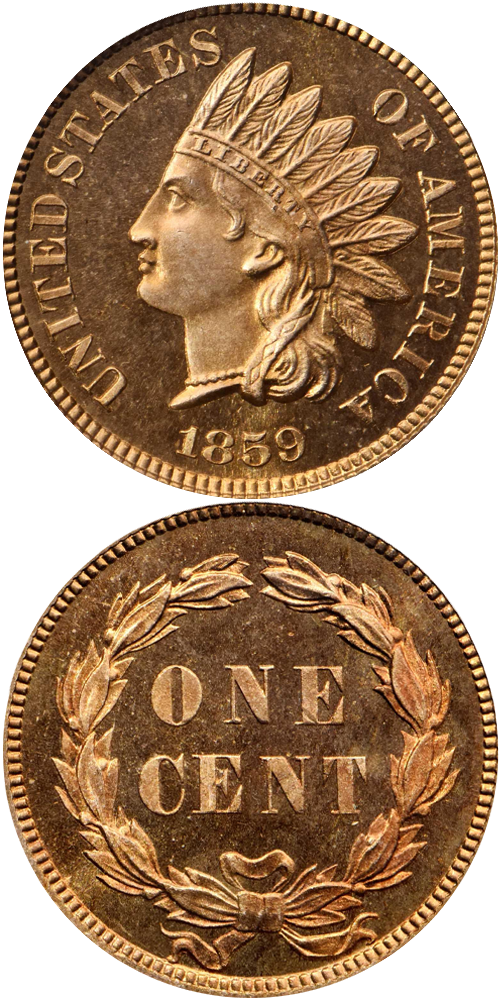1859 Indian Head Cent
James Barton Longacre's widely collected Indian cent made its debut in 1859 with a mintage of 36,400,000 circulation strikes and approximately 800 Proofs. The obverse portrait, in fact, is not that of a Native American but rather a representation of Liberty wearing a feathered headdress. The artist's original concept for this design made its debut in 1849 on the gold dollar, and subsequently went through various refinements (including on the three-dollar gold piece first issued in 1854) before appearing on the Indian cent. The reverse of the 1859 cent exhibits a simple olive wreath without a shield at its top, a design that was abandoned in 1860 in favor of the Oak Wreath with Shield design. (The olive wreath has gone down in numismatic literature as a laurel wreath due to Mint Director James Ross Snowden's designation from 1860.) The 1859 Indian cent, therefore, is a one year design type that is eagerly sought by today's collectors.
The debut of the Indian cent in 1859 came at a time when the United States was experiencing its first boom in coin collecting. In 1858, the Mint under Director Colonel James Ross Snowden began to produce Proof coins in greater numbers than in previous years and to advertise such pieces for sale. This practice continued through 1859, in which year the Mint recorded the number of Proof gold and silver struck for the first time in its history. (Proof minor coin mintages, however, were not recorded until 1878.) Despite the increased interest in these coins among contemporary Americans, the Mint's production of Proofs in both 1858 and 1859 proved overly optimistic. In fact, Rick Snow (2014) opines that less than half the estimated mintage of 800 Proofs for the 1859 Indian cent was actually distributed to collectors, the remaining pieces probably released into circulation in later years.
The example to the left was sold by Stack's Bowers Galleries in the August 2019 Rosemont ANA Auction, where it realized $19,200.






